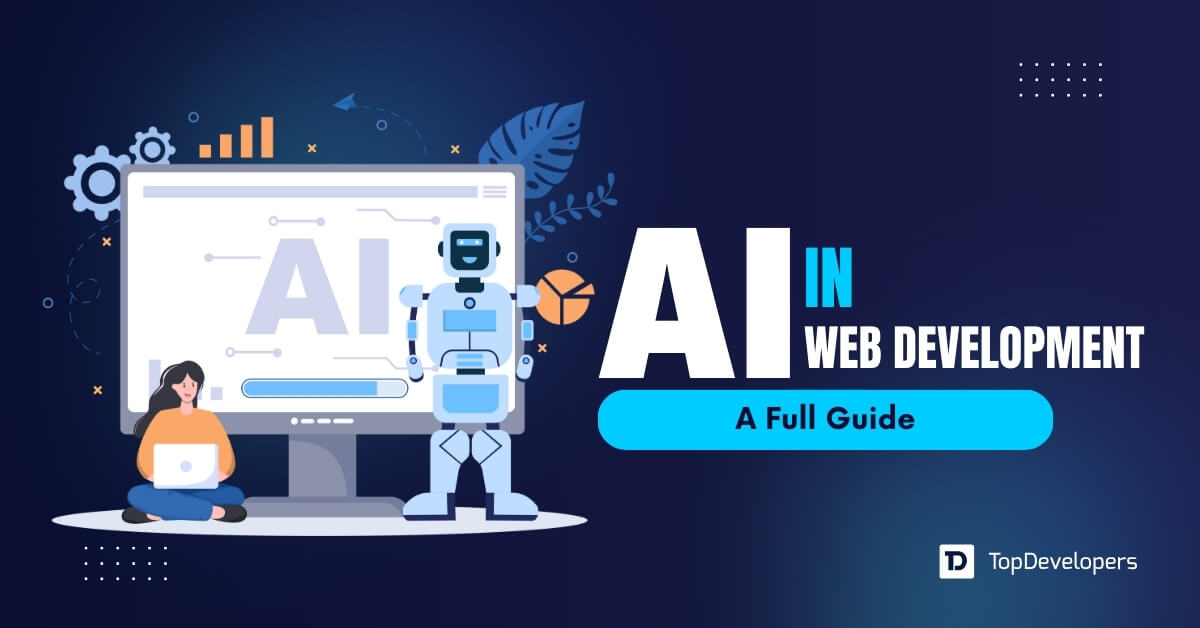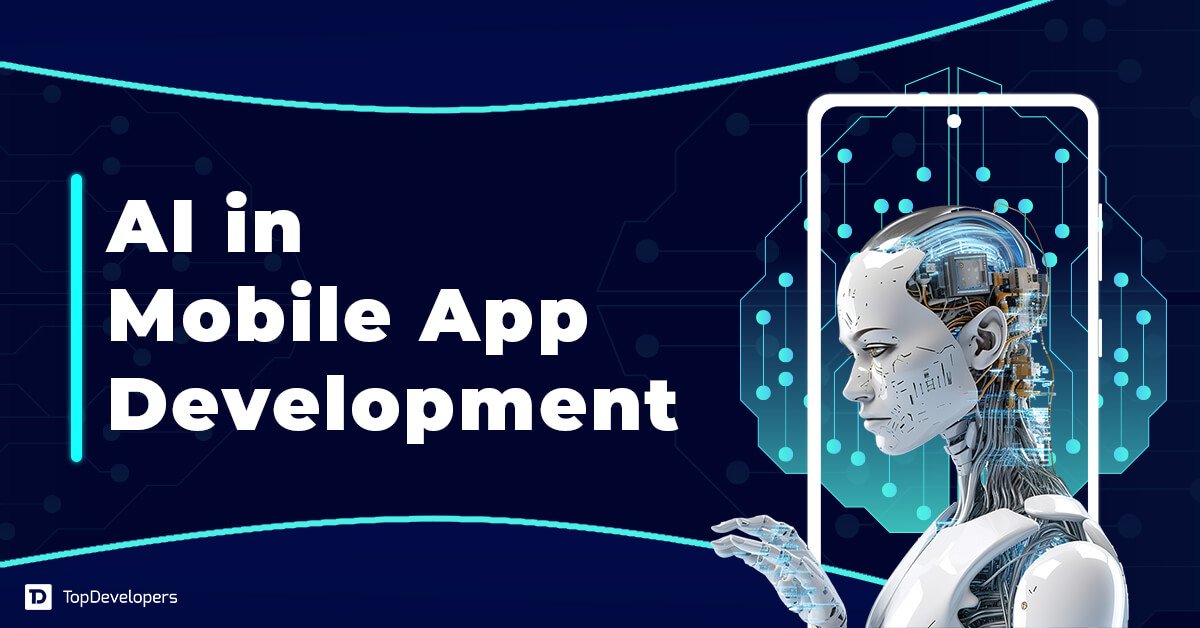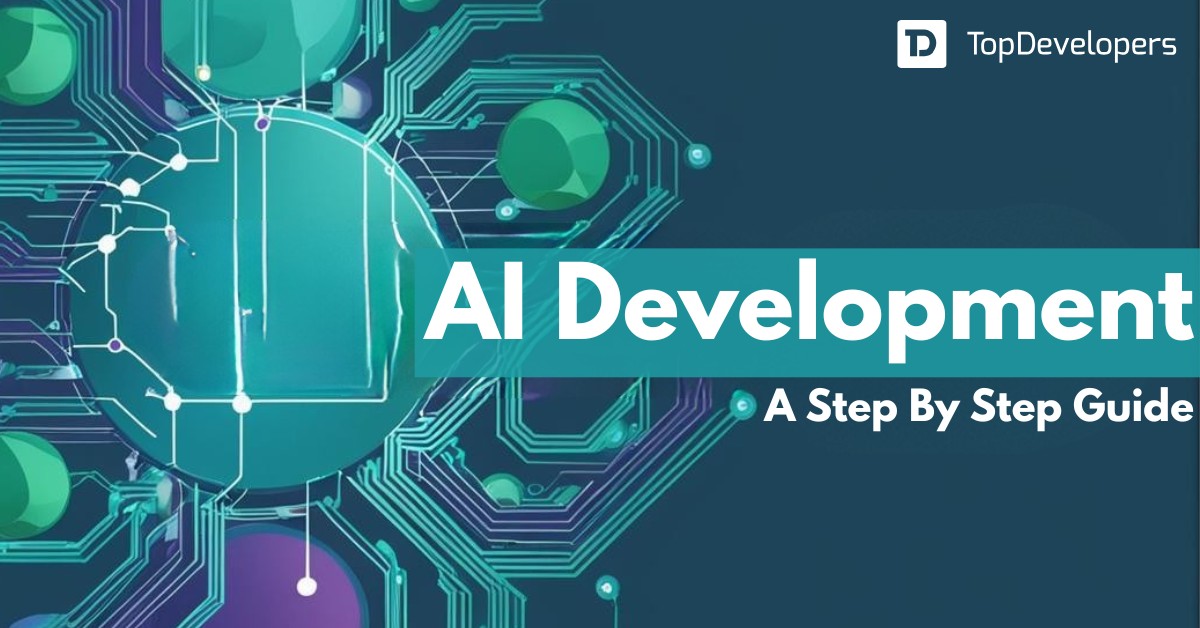
AI (Artificial Intelligence) is reshaping businesses across every sector, from automation in logistics to predictive models in healthcare. But with so many providers offering AI solutions, choosing the right one has become more complex than ever. A well-documented AI portfolio can be the key to making the right decision.
According to Gartner, over 80% of enterprises will integrate AI into their operational systems by 2026, yet only a fraction of these deployments will deliver measurable ROI.
This gap often stems from poor vendor selection. Many businesses get swayed by polished demos or vague success claims. What truly matters is the substance behind the pitch, and that’s where evaluating an AI portfolio correctly plays a crucial role.
This blog helps uncover what to look for, what to avoid, and how to evaluate an AI partner’s portfolio with confidence. Whether choosing an AI development company or reviewing proposals from multiple vendors, a deeper understanding of portfolios can save time, money, and effort.
Table of Contents
- What is an AI Portfolio?
- What Are the Differences Between Individual and Business AI Portfolios?
- What is Included in an AI Portfolio of AI Companies?
- What Really Matters in an AI Portfolio?
- What Doesn’t Really Matter (or Matters Less)?
- How to Assess an AI Portfolio Like a Pro?
- Final Thoughts: Focus on Practicality, Not Just Presentation
What is an AI Portfolio?
An AI portfolio is a curated collection of work that showcases the capabilities, expertise, and experience of an AI service provider or professional. It offers a glimpse into how they approach real-world problems using AI technologies.
A well-structured portfolio tells more than just what tools were used. It highlights the thinking, strategy, and execution behind each project. Whether it’s a chatbot trained on customer service data or a predictive model for supply chain efficiency, each entry in an AI portfolio should demonstrate practical application and measurable outcomes.
In short, an AI portfolio is not just a list of past projects. It’s proof of competence, creativity, and problem-solving ability—built around data, models, metrics, and results.
What Are the Differences Between Individual and Business AI Portfolios?
While the goal of both types of portfolios is to demonstrate AI expertise, the content and focus vary significantly between individuals and businesses.
Individual AI Portfolios
These are typically created by AI developers, engineers, or researchers. They often include:
- Personal projects or open-source contributions
- Kaggle competition results or model experiments
- Academic research, prototypes, and technical write-ups
The emphasis here is usually on technical skill, creativity, and exploration. It’s a space to show how well one understands algorithms, data handling, and model performance, often with less emphasis on business outcomes.
Business AI Portfolios
In contrast, AI companies focus on showcasing real-world problem-solving. Their portfolios may feature:
- Client case studies and success stories
- Deployed AI systems and integration workflows
- Results like increased efficiency, cost reduction, or customer experience improvements
Business portfolios are crafted to reflect practical impact, scalability, and cross-functional execution. The audience is typically decision-makers who care more about ROI and results than raw code.
Understanding this difference helps set the right expectations when reviewing each type of portfolio.
What is Included in an AI Portfolio of AI Companies?
An AI development company’s portfolio is designed to highlight its strengths across a range of projects and use cases. It is not just a showcase of technical work—it’s a business card, a credibility tool, and a success archive all rolled into one.
AI Models and Techniques Used
Details on the types of AI models implemented, like deep learning, natural language processing, computer vision, or reinforcement learning. It may also mention tools like TensorFlow, PyTorch, or proprietary frameworks.
Deployment and Scalability
Information about how the models were deployed, maintained, and scaled. This often includes DevOps, MLOps, and cloud integration setups (AWS, Azure, GCP).
Problem-Solution Alignment
Each entry should clearly define the client’s challenge, the AI approach used, and how the solution delivered results.
Performance Metrics
AI Portfolios should mention KPIs such as accuracy, precision, recall, F1 scores, or improvement percentages that measure success in real terms.
Case Studies and Business Outcomes
Detailed narratives explaining the scope of the project, methodology, and the business value generated, like reduced manual effort or increased conversion rates.
Tech Stack Transparency
Some portfolios include the exact technology stack used, which helps decision-makers understand the AI development company’s tooling expertise and compatibility with their existing systems.
An ideal AI portfolio goes beyond technical jargon and clearly communicates the practical impact of the work. It connects engineering with business value.
What Really Matters in an AI Portfolio?
Not all AI portfolios are created equal. While some look impressive at first glance, only a few stand out where it truly counts—business impact, problem-solving depth, and real-world usability. When reviewing an Artificial Intelligence portfolio, here’s what actually matters:
Domain Relevance and Industry Fit
An AI development company may have cutting-edge capabilities, but if those aren’t applied to problems similar to yours, the impact could fall short.
- Look for AI projects within your industry or use case category (e.g., healthcare, retail, logistics).
- Check if the AI development services provider understands industry-specific challenges like compliance, customer behavior, or operational constraints.
- A relevant AI portfolio helps ensure faster onboarding, better results, and lower risk.
Technical Depth and Model Maturity
A portfolio should showcase more than basic AI implementation.
- Does it highlight the use of advanced models like transformers, GANs, or LLMs?
- Is there clarity around how the models were trained, tuned, and optimized?
- Are unique approaches or custom models explained?
The presence of sophisticated AI model development and fine-tuning shows that the provider can go beyond cookie-cutter solutions.
Full-Stack Execution: From Data to Deployment
Look for end-to-end capabilities of an AI development company, not just model building.
- Does the AI portfolio demonstrate how raw data was sourced, cleaned, and prepared?
- Are there clear steps for training, validation, and testing?
- Is deployment mentioned, along with real-time use or API integration?
An AI development partner who can own the entire lifecycle delivers more reliable and scalable solutions.
Measurable Results and Key Performance Indicators (KPIs)
Impact matters more than effort. A strong AI portfolio will back its work with numbers.
- Look for quantifiable results such as “15% improvement in fraud detection” or “40% reduction in manual processing time.”
- Portfolio of AI projects entries should show metrics like accuracy, precision, recall, latency, or business ROI.
- Before-and-after comparisons add credibility to claims.
These metrics make it easier to judge whether the solutions were truly effective.
Ethical AI Practices and Responsible Use of Data
As AI use grows, ethical responsibility becomes non-negotiable.
- Does the AI portfolio mention how data was handled? Is user privacy respected?
- Are there signs that fairness, transparency, or bias mitigation were part of the project?
- Was the AI aligned with data governance and compliance (GDPR, HIPAA, etc.)?
Ethical alignment shows that the AI development company is future-ready and not just chasing trends.
When all of these elements are present and clearly explained, you’re looking at a portfolio that isn’t just good but also reliable, scalable, and aligned with real business value.
What Doesn’t Really Matter (or Matters Less)?
When evaluating an AI portfolio, it’s easy to get distracted by surface-level elements that seem impressive but add little actual value. While aesthetics and trends may catch the eye, they often don’t reflect the AI provider’s true capability to solve business problems.
Here are the elements that matter less than they appear:
Glossy Visuals Without Technical Substance
A beautifully designed slide deck or animated dashboard might look professional, but it tells you little about what’s happening behind the scenes.
- Visuals should support, not replace, technical explanations.
- Flashy front-ends are meaningless without backend robustness and model reliability.
- Focus on what the visuals represent, not how stylish they look.
A portfolio that prioritizes visuals over value might be masking a lack of depth.
Buzzwords Without Context
Terms like “generative AI,” “LLMs,” “predictive analytics,” or “multi-modal models” sound impressive—but are they clearly explained?
- Look for how and why a technology was used, not just what was used.
- Avoid portfolios that throw around trendy terms without connecting them to use cases or results.
- Overuse of jargon is often a red flag that the team lacks practical experience.
Real expertise lies in simplification, not complication.
Irrelevant or Generic Projects
Not every past project adds value to your current needs.
- A provider with strong work in manufacturing may not be the right fit for your healthcare app.
- Generic projects (like sentiment analysis on movie reviews) may show basic skills but not business readiness.
- Portfolios padded with unrelated or outdated work can dilute trust.
Always filter for context, complexity, and current relevance.
Academic Research Without Business Translation
AI development companies that highlight academic papers, prototypes, or research models can demonstrate theoretical expertise, but practical execution is a different skill set.
- Ask if these projects were deployed or just conceptual.
- Research work is valuable only if it translates into business impact.
- Many research-grade models are not designed for scale, efficiency, or real-time use.
Unless you’re hiring for R&D, academic credibility alone isn’t enough.
Tool Listings Without Case-Based Application
Listing AI technologies like TensorFlow, PyTorch, or Hugging Face is common, but without showing how these tools were applied, the information is shallow.
- AI Tools are only as valuable as the solutions built with them.
- A portfolio should show how the tool was used to solve a problem, not just name-drop it.
- Depth beats breadth when it comes to evaluating real-world capability.
By identifying what doesn’t matter, you gain clarity on what truly does. It helps avoid missteps, spot distractions early, and focus on substance over show.
How to Assess an AI Portfolio Like a Pro?
Evaluating an AI portfolio goes beyond browsing case studies and reading tech jargon. The real goal is to assess whether an AI provider can deliver results tailored to your needs, under real-world conditions, using practical, ethical, and scalable approaches.
Here’s how to review an AI portfolio with the mindset of a pro:
Smart Questions to Ask AI Development Companies
Before trusting any portfolio, get answers to questions that reveal more than surface-level confidence. Start with an open conversation, then dig deeper with these targeted questions.
- What specific problem did this project aim to solve?
- How did you identify and validate the AI approach?
- What industries have you worked with, and how do those align with ours?
- How long did it take to go from prototype to deployment?
- What metrics were used to measure success?
- How did the model perform after deployment? Were there any trade-offs?
- Did the solution result in measurable business impact (e.g., cost savings, revenue growth)?
- Where did the data come from, and how was it prepared?
- How do you ensure fairness, transparency, and privacy in your AI models?
- What steps do you take to avoid bias or unethical outcomes?
Asking these questions helps cut through the fluff and understand the thought process, real-world performance, and alignment with business goals.
How to Assess Outcomes Over Outputs
Many AI providers highlight technical outputs: model accuracy, number of layers, tools used, etc. But that’s not the full picture.
What you need to look for is outcomes—the value delivered.
- Did the AI solution reduce manual work, improve user experience, or save costs?
- Was there an uplift in customer engagement, faster processing times, or more accurate predictions?
- Are there comparative results (before vs. after AI implementation) showing real change?
A strong AI portfolio doesn’t just show that something was built—it shows that it worked.
Tips on Red Flags to Watch For
Spotting early warning signs can help avoid costly mistakes. Here are red flags that signal caution:
Vague Project Descriptions
- If the portfolio uses general phrases like “improved performance” without metrics or context, that’s a problem.
- Look for specific use cases, challenges, and outcomes.
No Mention of Deployment
- Building a model is one thing; getting it to run in production is another.
- Absence of deployment details may signal a lack of real-world implementation experience.
Overemphasis on Tools or Tech Jargon
- A portfolio that’s just a list of frameworks and libraries may lack strategic thinking.
- Focus on how and why tools were used—not just what was used.
Lack of Collaboration Indicators
- No mention of working with cross-functional teams like design, marketing, or operations? That can limit business relevance.
- Look for signs of collaborative execution.
No Feedback or Testimonials
- A portfolio with zero client feedback or references is incomplete.
- Testimonials or success metrics from clients boost credibility.
By asking smart questions, evaluating outcomes, and watching for red flags, decision-makers can avoid hype-driven choices and partner with providers that deliver lasting value through AI.
Final Thoughts: Focus on Practicality, Not Just Presentation
In a space as fast-moving as AI, it’s easy to get caught up in polished presentations, trending tools, or buzzworthy case studies. But when it comes to selecting the right AI development company or partner, the real differentiator lies in practical execution and business relevance.
An impressive AI portfolio should do more than look good—it should speak directly to the problems it solved, the value it delivered, and the outcomes it drove. Technical skill is important, but so is the ability to think strategically, execute reliably, and scale solutions for real-world conditions.
The best AI partners are not those who build the flashiest models, but those who understand your business, deliver measurable results, and maintain ethical standards throughout the AI development process. In the end, always prioritize clarity over complexity, impact over interface, and value over volume.
 Gillian Harper
| Apr 24, 2025
Gillian Harper
| Apr 24, 2025
A professionally engaged blogger, an entertainer, dancer, tech critic, movie buff and a quick learner with an impressive personality! I work as a Senior Process Specialist at Topdevelopers.co as I can readily solve business problems by analyzing the overall process. I’m also good at building a better rapport with people!


